Faculty embrace the studio as the centerpiece of design education

Tom Regan

Jon Rodiek

Weiling He
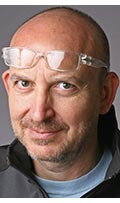
Peter Lang

Chanam Lee
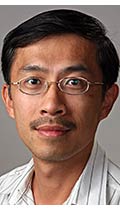
Ming-Han Li
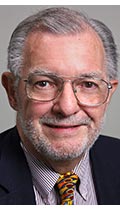
Rodney Hill
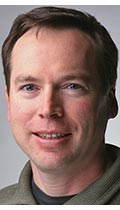
Tim McLaughlin
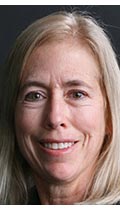
Mardelle Shepley
As higher education leaders across the nation wrangle with budget constraints and consider reforms aimed at doing more with less, Texas A&M College of Architecture educators continue to embrace the studio, the time-tested cornerstone of design education, as sacrosanct — the most critical component of modern design pedagogy.
“The studio embodies the essential structure of any professional course of study in design and is a unique form of learning and doing that design professionals will tell you is the most significant, memorable and useful experience of their university education,” said Tom Regan, retired professor of architecture, former dean of the college and an expert in design education.
In a design studio, as many as 18 students and one faculty member work together to produce a solution to a design or land-use problem, or, in the case of the college’s department of visualization, a creative product such as digital animation.
Peer-to-peer education
Unlike a lecture-based class, education in a studio includes one-on-one interaction with the faculty member leading the studio and input from other design faculty, as well as extremely beneficial interaction with fellow students.
“In a studio, you learn from your colleagues as much as what you learn from your faculty,” said Jon Rodiek, professor of landscape architecture, who’s been leading studios at Texas A&M since 1988. “You’re interacting with other members of your group and given time to create and refine your presentations, which is a reflection of how a professional office operates.”
“The quality of projects improves because there’s a greater body of knowledge to draw from,” said Michael Rollins, a senior environmental design major. “Because you’re closer to your classmates than you are in a lecture hall, students are more comfortable asking questions and getting opinions from their peers.”
“There are a lot of hiccups, a lot of things that can hold you up on a project,” said Andrew Horne, a senior environmental design major. “If you don’t know the answer to something, you can just post a question and chances are someone will know the answer.”
Collaboration is always the key, said Weiling He, assistant professor of architecture.
“Work produced from collaboration, especially across multiple disciplines, is usually stronger than that from a singular approach,” she continued. “Students from different fields provide their unique viewpoints and ways of thinking, which enriches the design process.”
The design review
Each student, said Regan, analyzes an assigned problem, develops a design solution, then presents the solution to reviewers, who often include visiting practitioners and other guest reviewers, including clients or client representatives. For instance, in architecture-for-health studios, it is standard practice for design reviews to include healthcare industry professionals. These guest reviewers join with faculty members and fellow students to provide observations and critiques that aid the evolution of the design, which is consequently revised as the academic term progresses.
“We bring in engineers, heating/ventilation/air conditioning consultants, clients, you name it, to create an environment that’s extremely rich in learning and demonstration,” said Peter Lang, associate professor of architecture.
The variety of guests at design reviews reflects architecture’s unique position in the professional world.
“It’s the one profession that subsumes all other professions,” said Lang. “It subsumes the arts, engineering, health safety, technology and building safety. All that is too intensive to learn in a lecture-based classroom.”
An interactive process
“It is through this vital interactive process, where ideas of others are considered by the student in relation to her/his own proposal, that professional maturity begins to evolve,” said Regan. “One learns the value of the critique of others and to build on that critique to improve the project.”
The design studio, he continued, more than any other component of the student’s education, is where one learns the processes of conjecture/test, analysis/synthesis, thinking/making that is fundamental to the success of all design professionals.
“The studio environment,” said Chanam Lee, associate professor of landscape architecture, “helps students learn how to handle real-world complexities through the iterative, composite, multi-dimensional and systematic process of design.”
“Students gather technical, written, scientific, social and cultural information and put it in a format that’s usable,” said Rodiek. “With that information, they analyze the client’s needs and the site’s needs; then go into synthesis, where they create and design a master plan.”
“You get a lot of hands-on learning in the studio,” said Ming-Han Li, associate professor of landscape architecture at Texas A&M. “If a class is lecture-based you learn theory, then you do homework. A studio is more like a laboratory where students get face-to-face interaction with a professor and their peers, which you don’t see in lecture-based learning.”
Li said lab settings also take place in other fields such as engineering, but they are usually led by teaching assistants. “Our studios are always led by professors.”
Lessons learned
What is taught in studio may or may not be directly used in real world architectural practice, He said. What is more important than specific skills, which one can always develop, she continued, is learning new ways of thinking and developing curiosity and openness to unfamiliar ideas.
“Like art,” she continued, “architecture is about defining a language. The beauty of architecture is that it represents the marriage of both the intuitive and the analytical.”
Studio education is about honing the creative process, “the ability to bring order out of chaos,” said Rodney Hill, a professor of architecture at Texas A&M since 1969.
Hill’s former students, now working in design professions, are quick to recall lessons they learned as undergraduates that continue to inform their practice.
“It has been more than 34 years since I sat in Rodney Hill’s studio, but there has never been a day since that I do not use one of the lessons, exercises or examples introduced to me, a wide-eyed freshman in Architecture 101, by Rodney Hill,” said Los Angeles architect David Applebaum ’80, also known as “Architect to the Stars” for his long list of celebrity clients.
“Rodney,” he said, “did not just teach artful design, theory, programming and practice. He taught us to think for ourselves, find our voice and think creatively. He confidently steered me and countless thousands of students and former students toward self-realization.”
Steven R. Shores, who earned a Bachelor of Environmental Design degree in 1996, said the studio experience taught him that problems always have more than one solution.
“A week into a project, rather than having us present our project as our own, Rodney had us switch projects with another student in the studio, thus giving our project to another studio mate and taking on another student’s work, incorporating your own ideas and presenting it at the end of the following week.”
What he took away most from that project, he said, is that things are not always in one’s own control. “Sometimes, you have to adapt quickly and creatively to situations as they arise,” he said.
‘You, me and us’
“You have to work very hard,” said Li. “Oftentimes you work overnight to generate a final product. That kind of experience with your peers will help you in any field.”
The studio environment is unlike any other on campus, said Robyn Hammond, a senior environmental design major. ”Students really do become your family. You learn from each other and you motivate each other.”
The studio dynamic, said Rodiek, also differs from the traditional classroom.
“In a lecture class, it’s just you and me. In a studio, it’s you, me and us,“ he said. “In a studio, a good faculty member learns quickly how to move away from the mentor/genius/primary consultant role to become a guide to help students become leaders.”
The studio provides an ideal setting to offer a wide range of learning opportunities for students with different learning styles, said Lee. “Students learn by doing or by reading,” she said, “but also by watching others and by talking about ideas.”
Amy Kircher ’09, a former environmental design student, said the studio is “a haven for experimentation and discovering one's strengths.”
“In a studio, it’s not ‘give me your best shot,’ it’s ‘you’re going to improve that,’” continued Rodiek. “Here’s what I want you to do, and bring it back to me next week. Students have an opportunity to take charge of their own education.”
A quantifiable advantage
There’s a quantifiable advantage to the synergism that comes from working with peers in a lab or studio environment, noted Tim McLaughlin, head of the Department of Visualization.
A graduate of the Master of Science in Visualization Science program, McLaughlin worked for 13 years on the vanguard of visualization in the U.S. film industry, playing a significant role in the production of 15 major Hollywood film projects for Industrial Light and Magic and Lucasfilm Feature Animation studios.
While working for ILM, McLaughlin would periodically review the work of Texas A&M visualization students on the company’s behalf, for hiring and scholarship award purposes. During this period, he and his colleagues once noted a measurable decline in the quality of student work. Upon investigation, he said, they found that the temporary slump corresponded with a rise in the computing power of students’ personal computers and laptops, which in some cases were more powerful than the once high-end computers installed in the Visualization Laboratory.
“So rather than working together, collaborating on projects in the Viz Lab and reaping the rewards inherent in that process, the students were working independently at home, and their work was suffering as a result,” he said. The problem was remedied when the Viz Lab equipment was upgraded and students returned to work together in the lab.
‘It’s an adventure’
Each studio, said Mardelle Shepley, professor of architecture and director of the Center for Health Systems & Design, has its own culture generated by personalities and ambitions of its students, creating a unique educational experience.
“Every semester when I begin a studio, I feel like the students and l are boarding a ship,” she said. “It’s an adventure. We know where we are going, but can't predict the weather or currents. Somehow we always make it into port in spite of occasionally running aground or fending off pirates.”
Previous post
Next Post
Tags
- academics
- applied creativity
- arch gallery
- architecture
- archone gallery
- building a better texas
- college culture
- feature
- interdisciplinary
- landscape architecture & urban planning
- laup gallery
- studio projects
- undergraduate work
- visualization
Related Posts

Alums help students design lost school models from memory

Summit explored education advances with ‘smart’ cities

BED student designs 'Real Projects' home

Texas A&M researchers enabling buildings to ‘breathe’
Follow Us
Facebook Twitter Vimeo Youtube Flickr RSS
Recent Posts

Planning prof heads study of disaster housing aid

A message from the dean

Former student remembered as expert planner

Leading educator named new head of Architecture Dept.








_thumbnail_small.png)
